So apparently Nosferatu’s inclusion on my Watchlist is kind of a fluke because when I made the list on December 26th, 2012, Nosferatu was in the IMDb Top 250. Today it is not. But because I quickly learned the the IMDb Top 250 is pretty malleable and often changing, I made a rule that the Watchlist would stay the same regardless of the IMDb Top 250. Maybe when I finish the 163 movies I have left, I’ll go back and make a new Watchlist out of films that made it onto the IMDb Top 250 since 2012.
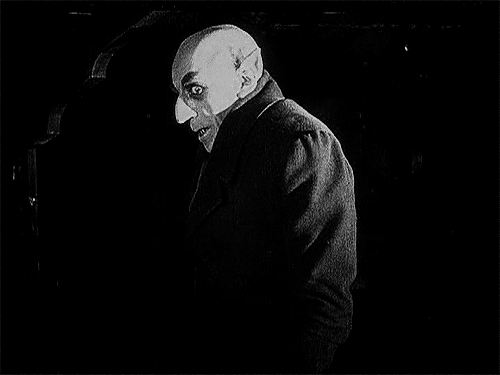
Oh, yes, anyway! So Nosferatu is the 1922 German silent-film about a vampire living in Transylvania. Yes, it is an illegal adaptation of Bram Stoker’s 1897 novel Dracula. Because the production company could not obtain the rights to the book for this, their first film, they made it anyway and just changed the names. Dracula is called Count Orlok, and the word “vampire” is substituted for “Nosferatu.”
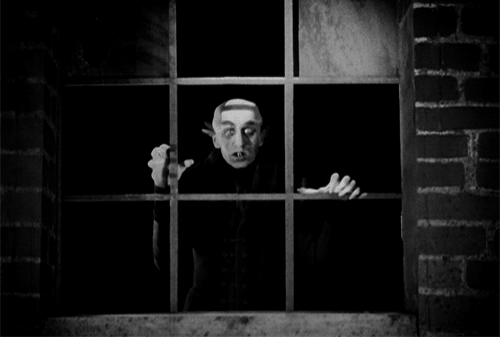
And Bram Stoker’s heirs SUED the production company for this flagrant ripping off, causing a judge to declare that every copy of the film must be burned. And the production company went bankrupt from the legal fees. BUT. A copy survived, thanks to a cult following for the film.

And thank God, right? Today, the film is in the public domain in the US (although it is not in every European country). Even Netflix has it!
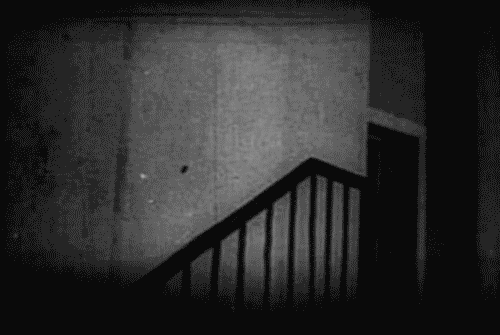
Like most millennials, my first introduction to Nosferatu was in a 2002 episode of Spongebob Squarepants…? Count Orlok (referred to as Nosferatu in the episode) makes a two-second cameo as the culprit in the hash-slinging-slasher plot.
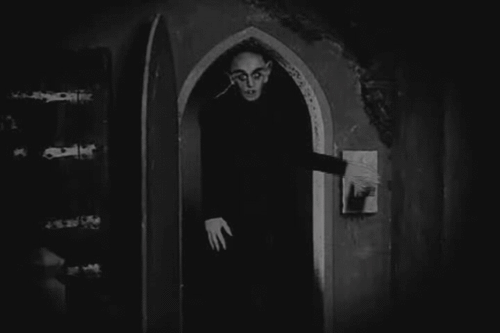
Here’s the original shot from the film.
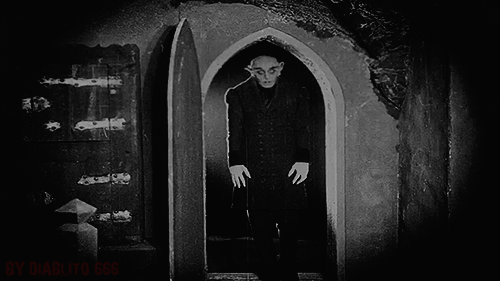
I have no idea why this happened and never will. Nosferatu is one of the most classic horror films of all time (rated as the second-best horror film on Rotten Tomatoes after The Cabinet of Dr. Caligari). It tells the story of a man named Hutter traveling to Transylvania to visit a mysterious count who is interested in buying some real-estate in his town. He also has a boring and yet overly dramatic wife named Ellen.
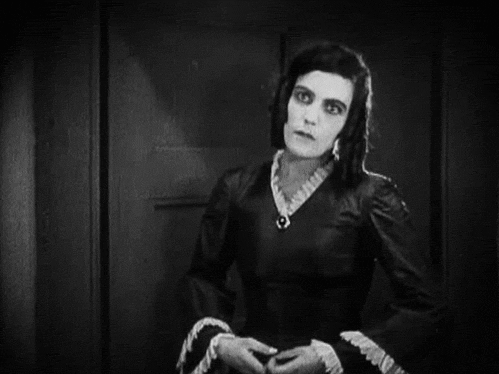
Hutter is very perturbed by Count Orlok’s strangeness, and eventually escapes when he learns the truth about him.
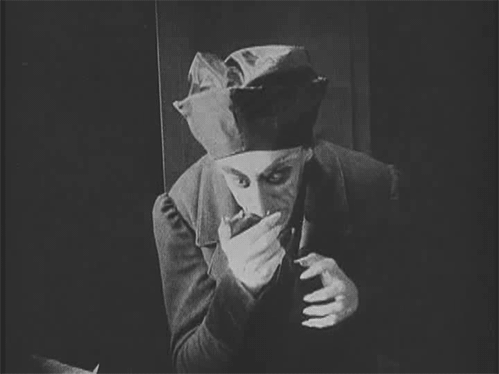
In terms of how the film holds up, I think the biggest obstacle I had in being genuinely scared by the events was the strange music choices. The music was originally performed by an orchestra at the screenings when it was released in 1922, so the current versions just have sort of improvised scores. The one Netflix had wasn’t scary at all. You could’ve swapped in the soundtrack fromPsycho and I’d have nightmares for weeks, but watching this version it felt like everything was sort of tame. There were only a few times when I was like this:

Regardless, the film is a true classic of the horror genre, and I guess go Germany for making it without even asking permission?
No comments:
Post a Comment